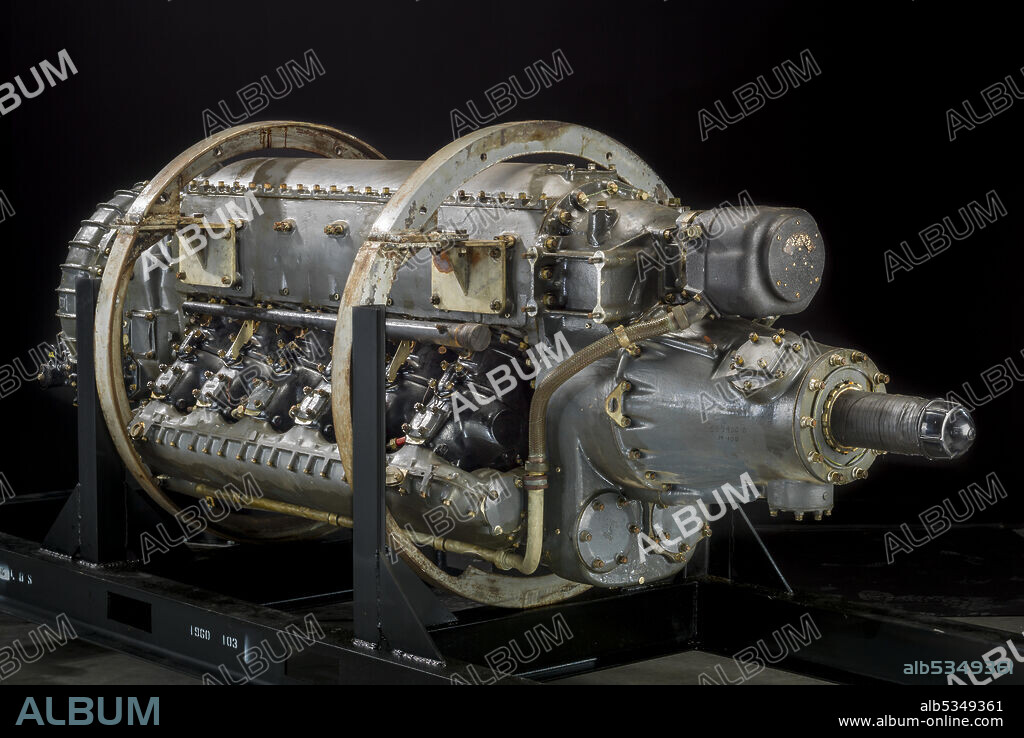alb5349361
CONTINENTAL AVIATION AND ENGINEERING CORPORATION. Continental Hyper I-1430-11, Inverted V-12 Engine,1942. Creator: Continental Aviation and Engineering Corporation.

|
Add to another lightbox |
|
Add to another lightbox |



Title:
Continental Hyper I-1430-11, Inverted V-12 Engine,1942. Creator: Continental Aviation and Engineering Corporation.
Caption:
In 1932, the Army contracted with Continental for development of a cylinder with high specific power. Using the resulting Hyper No. 1 cylinder, the Air Corps instructed Continental in 1934 to develop what became the horizontally opposed O-1430 to be buried in the wings of large aircraft to improve streamlining for higher speed. However, by this time, the Air Corps decided that 746 kW (1,000 hp) engines were obsolete for bombers, and that fighter wings were too thin for a submerged installation. By 1939, the Air Corps decided that an inverted vee was needed for improved visibility, and instructed Continental to drop the 0-1430 and begin work on the inverted I-1430. Following development problems, it was decided in 1943 that the engine could not possibly be used in the war, and only eight engines were built for experimental use. This Continental I-1430-11 was test flown in a modified Lockheed P-38 testbed aircraft.
Personalities:
Credit:
Album / Heritage Art/Heritage Images
Releases:
Model: No - Property: No
Rights questions?
Rights questions?
Image size:
6600 x 4416 px | 83.4 MB
Print size:
55.9 x 37.4 cm | 22.0 x 14.7 in (300 dpi)
Keywords:
1940S • 20TH CENTURY • 2ND WORLD WAR • AEROPLANE • AIR AND SPACE MUSEUM • AIR TRANSPORT • AIRCRAFT • AIRPLANE • ALUMINIUM • ALUMINUM • AMERICA • AMERICAN • AVIATION • BRASS • CENTURY • COLOR • COLOUR • CONCEPT • CONTINENTAL AVIATION AND ENGINEERING CORPORATION • COUNTRY • DECADE • EDUCATION • EDUCATIONAL INSTITUTION • ENGINE • FLIGHT • FORTIES • HAZMAT: CADMIUM PLATING • IRON AND STEEL • IRON_AND_STEEL • LOCATION • NASM • NATIONAL AIR AND SPACE MUSEUM • OBJECT • OBJECTS • PAINT • PRESERVATIVE COATING • PROPULSION • PROPULSION-RECIPROCATING & ROTARY • RECIPROCATING MOTION • ROTARY ENGINE • RUBBER • SCIENTIFIC INSTITUTION • SECOND WORLD WAR • SMITHSONIAN INSTITUTION • STEEL INDUSTRY • STEEL • TECHNOLOGY • TEXTILE • TRANSPORT • TRANSPORTATION • UMBRELLA • UNITED STATES OF AMERICA • UNITED STATES • USA • WAR • WOOD • WORLD WAR 2 • WORLD WAR II • WW2 • WWII
 Pinterest
Pinterest Twitter
Twitter Facebook
Facebook Copy link
Copy link Email
Email

